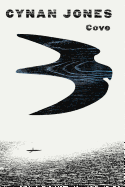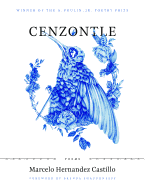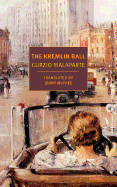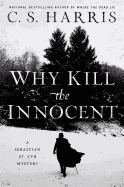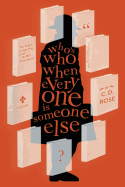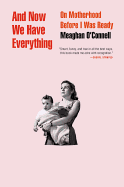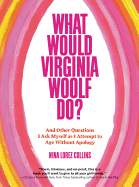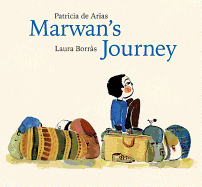Friday, May 4, 2018
Mother's Day is the perfect time to dive into books that celebrates mothers. 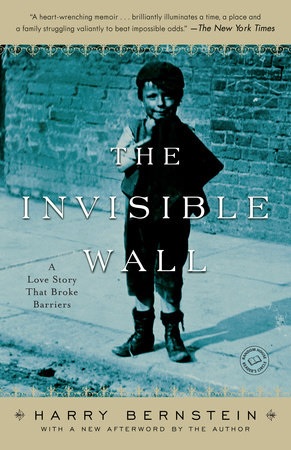 In The Invisible Wall (Ballantine, $16), the first of three memoirs started when the author was 93 years old, Harry Bernstein details his childhood in England in the 1910s. His street had Jewish families on one side and Christian families on the other, and he details the clashes between his neighbors as well as the tragedies that brought them together. Harry's mother played an important role in holding his family together during difficult times.
In The Invisible Wall (Ballantine, $16), the first of three memoirs started when the author was 93 years old, Harry Bernstein details his childhood in England in the 1910s. His street had Jewish families on one side and Christian families on the other, and he details the clashes between his neighbors as well as the tragedies that brought them together. Harry's mother played an important role in holding his family together during difficult times.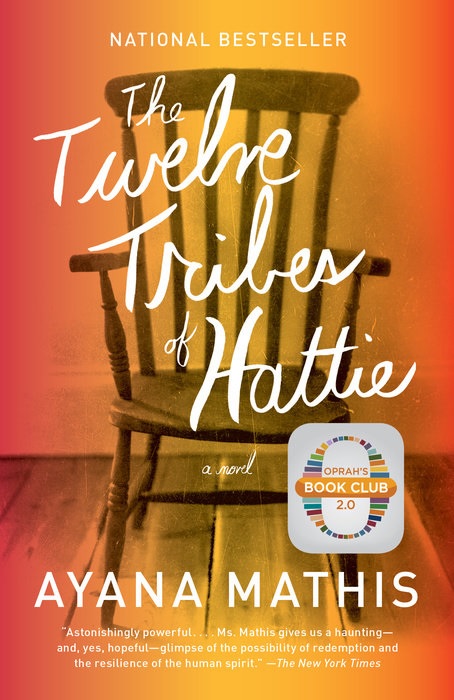 The award-winning The Twelve Tribes of Hattie (Vintage, $16.95) by Ayana Mathis is a raw, emotional and compelling novel that follows the challenging lives of Hattie and her children, starting in 1923 in segregated Georgia, through the Great Migration and their struggles in a poor black neighborhood in Philadelphia. Each chapter moves forward in time (through 1980) and is told from the perspective of one of Hattie's children or grandchildren.
The award-winning The Twelve Tribes of Hattie (Vintage, $16.95) by Ayana Mathis is a raw, emotional and compelling novel that follows the challenging lives of Hattie and her children, starting in 1923 in segregated Georgia, through the Great Migration and their struggles in a poor black neighborhood in Philadelphia. Each chapter moves forward in time (through 1980) and is told from the perspective of one of Hattie's children or grandchildren.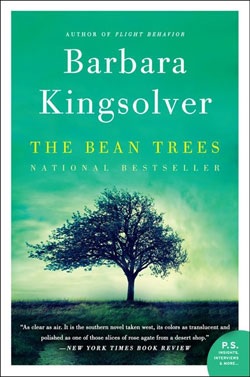 The Bean Trees (Harper, $15.99) and Pigs in Heaven (Harper, $14.99) by Barbara Kingsolver are two heartwarming novels about a girl who grows up in rural Kentucky with a single mother and moves to Arizona. Her life is forever changed when she becomes the adoptive mother of an abandoned Native American child named Turtle and, later, when she must fight to keep her. --Suzan L. Jackson, freelance writer and blogger at Book By Book
The Bean Trees (Harper, $15.99) and Pigs in Heaven (Harper, $14.99) by Barbara Kingsolver are two heartwarming novels about a girl who grows up in rural Kentucky with a single mother and moves to Arizona. Her life is forever changed when she becomes the adoptive mother of an abandoned Native American child named Turtle and, later, when she must fight to keep her. --Suzan L. Jackson, freelance writer and blogger at Book By Book
Cove
by Cynan Jones
With his fifth short novel, Cynan Jones (Everything I Found on the Beach) further establishes himself as a master of the power of less. Cove consists of spare, verse-like prose, some thoughts and observations not always in direct correlation to the preceding or subsequent passages, yet all part of a poignant whole. A deceptively simple story of man against nature, Cove's coolness sits on currents of underlying complexity that amplify the tumult. Although the writing is quiet and polished, the terror is real. "No paddle. No flashlight. One dead phone."
A kayaker leaves a simple note, "Pick salad x," and heads to the sea to fish. Caught in a storm--"One repeated word now. No, no, no"--he is struck by lightning. On regaining consciousness, his body is damaged, his memory horrifyingly blank. He can't recall his name, but he knows he's in trouble and must find a way back to a life that flickers like static electricity at the back of his mind.
Jones writes with an attention to detail that dazzles in its ability to capture the beauty of nature ("a flock of jellyfish, like negligees") and its supreme power ("A metallic sheen comes to the water, like cutlery") with sure-handed brevity. At just over 100 pages, Jones's minimalist style has maximum effect, creating empathy for a mystery protagonist, warmth for his past and hope for his future as he struggles against the odds to be the legend who returns rather than the myth who disappeared. --Lauren O'Brien of Malcolm Avenue Review
Discover: A kayaker loses his memory following a lightning strike and must fight for his life on the open sea in this minimalist glimpse into his jumbled mind.
Eventide
by Therese Bohman, transl. by Marlaine Delargy
In Eventide, Swedish author Therese Bohman presents a portrait of an aging woman in academia who's as forceful and cutting as she is vulnerable and tender. In the aftermath of the dissolution of her long-term romantic relationship, Karolina Andersson feels adrift. Her only anchor is her art history professorship at the University of Stockholm, but as a middle-aged academic, Karolina feels restless in her personal life and insecure in her professional one. As she seeks satisfaction and companionship, she is continuously pulled back to Anton Strömberg, a graduate student--and her advisee--who is working on a dissertation that could change the art history academic landscape. Karolina is struck by Anton's energy and confidence, and soon cannot stop her complex emotional life from intertwining with her professional one.
The atmosphere of a pressurizing and unmoored academic life is translated perfectly on the page. Bohman's prose is clear-eyed and arresting, constructing Karolina's character as both an enigma and an open book. The complexities of this protagonist are incisively realized, and build in both emotional tenor and nuanced uncertainties as the novel progresses. Never does Bohman suggest a judgmental or editorialized reading of Karolina's weaknesses and insecurities, nor does she excuse her actions and thoughts. Instead, Eventide's uncompromising prose and Karolina's unapologetic character lead the plot through its rhythmic crests and collapses, riding the waves of disappointment and desperation that exemplify professional and personal ambition. By the end, the reader is contented, like Karolina, to float amid implied depths of doubt and be mesmerized by the impassioned psychological insights that rise to the surface. --Alice Martin, freelance writer and editor
Discover: With literary flare and levelheaded pacing, Eventide provides a glimpse into the unsettling nuances of academic gender politics and the restless, unbounded nature of female aging and agency.
The Kremlin Ball
by Curzio Malaparte, transl. by Jenny McPhee
The Kremlin Ball is yet another underappreciated jewel of a novel unearthed by New York Review Books and translated into English for the first time by Jenny McPhee. Originally published after Curzio Malaparte's death in 1957, The Kremlin Ball draws heavily from real life in its depiction of Soviet "high society" in 1929. McPhee writes in her introduction: "In this novel... everything is true: the people, the events, the things, the places. The characters did not originate in the author's imagination, but were drawn from life." The characters include a host of famous historical figures, including Stalin, but even lesser-known figures are described in the footnotes.
Malaparte's talents as a writer include his acid wit and an eye for detail. In his hands, the higher levels of Soviet society prove just as ridiculous and corrupt as the aristocratic societies of Europe. The tennis matches, affairs, scandals and society gossip that define court life in Europe are conducted in Moscow, however, in a pervasive atmosphere of fear: "The chief characteristic of the communist nobility is not bad taste, vulgarity, or bad manners, nor is it complacency of wealth, luxury, and power: it is suspicion." Many in the Soviet leadership will have a bad end--Stalin's consolidation of power and the coming Great Purge loom large in the book. Malaparte's sense of humor is pitiless, memorably referring to Lenin's embalmed corpse as a "precious crustacean." Kremlin Ball is a terrifically funny and entertaining portrait of a seemingly powerful group of people dancing on the brink of destruction. --Hank Stephenson, bookseller, Flyleaf Books, Chapel Hill, N.C.
Discover: Curzio Malaparte directs his biting wit toward Soviet "high society" as it existed at the end of the turbulent 1920s.
Mystery & Thriller
Why Kill the Innocent
by C.S. Harris
Why Kill the Innocent, the darkly atmospheric 13th entry in C.S. Harris's Sebastian St. Cyr series, captures the drama and intrigue of the British royal household in 1814. The nation, brought to its knees by 20 years of war and a brutally cold winter, bitterly resents its extravagant "Prinny"--the Prince Regent. As he spends wildly on palaces and parties, the people of England are freezing to death, and anger is rising.
Lord Sebastian St. Cyr is heir to an earldom, but his wife, Lady Hero, has a strong social conscience. She is headed out with a midwife friend to attend the birth of an impoverished woman when she trips over the body of a gentlewoman. Lying dead in the Clerkenwell snow is Jane Ambrose, a gifted musician and the piano teacher of Princess Charlotte, the only daughter and heir of Prinny.
Sebastian and Hero set to work to untangle the strange threads in this case: Who would want Jane dead? And why did they leave her body in this insalubrious part of London? Was it Jane's connections to the royal family? Or does the answer lie closer to home with Jane's possibly unfaithful husband?
As the questions mount and the snowbanks pile higher, the St. Cyrs will have to race against the evidence-eliminating weather while competing with the royal family's desire to hush up any scandals. A perfect blend of Elizabeth George and Georgette Heyer, Why Kill the Innocent will appeal to both mystery and Regency readers, with its intricate plotting and historical detail. --Jessica Howard, bookseller at Bookmans, Tucson, Ariz.
Discover: This atmospheric historical mystery features Sebastian St. Cyr, heir to an earldom, as he investigates a murder in the royal household.
Who's Who When Everyone Is Someone Else
by C.D. Rose
C.D. Rose's second novel, Who's Who When Everyone Is Someone Else, is an offbeat little book for people who love books.
An unnamed author is invited to give a series of lectures on forgotten books in an unnamed European city. The professor who invited him never shows up and his talks are roundly criticized by the bizarre university staff he does meet. But his main reason for visiting was to find the grave of his favorite writer, who's very controversial in this country, and also may not exist. What follows is a thoughtful, funny romp through a mysterious town and literature both real and imagined.
Rose (The Biographical Dictionary of Literary Failure) has invented dozens of books for the narrator to discuss, all so compelling that one wishes they could be found in a dusty bookshop in the real world. His lectures, included in their entirety, make this a book not just about but also of literary criticism--even if the texts he discusses are fictional--with thoughts on crime novels, romance, children's literature, literary fiction and more. He encounters many recognizable book world issues, both blithe and broad: competition among writers, poorly attended events, the difficulty of separating an author from her work, the role of the critic and the age-old problem of too many books to read. Who's Who is itself a testament to what its narrator believes--the power of fiction as truth and as escape. --Katy Hershberger, freelance writer and bookseller
Discover: Who's Who When Everyone Is Someone Else is a delightfully odd novel about the love of a good book.
Food & Wine
Turnip Greens & Tortillas: A Mexican Chef Spices Up the Southern Kitchen
by Eddie Hernandez and Susan Puckett
Eddie Hernandez was baptized by potlikker--or so his cookbook Turnip Greens & Tortillas: A Mexican Chef Spices Up the Southern Kitchen begins. He reminisces about the dish he made in 1989 from a bag of turnip greens that a customer brought to the Tex-Mex restaurant where Hernandez was a cook. He conceived of an approach that united Southern greens with Mexican spices, earning devoted followers and setting the stage for a career in cuisine.
At 17, Hernandez came to the United States from Monterrey, Mexico, in pursuit of a record deal in Houston. Though drumming didn't pan out, his burgeoning taste for cooking did. Now he is executive chef of Taqueria del Sol, with restaurants in Georgia and Tennessee. In Turnip Greens & Tortillas, he offers straightforward recipes that make something special from something simple, drawing from traditions and adding a personal twist.
A day's menu might start with Fritos chilaquiles or cornmeal waffles with spiced syrup for breakfast. For lunch: shrimp and grits or zucchini and corn soup with brie. Snacks to nibble while imbibing an Eddie Palmer--sweet tea with Hornitos Reposado and lime--include Cajun boiled peanuts or fried green tomatillos with peach-habanero sauce. For dinner, a Mississippi hot shrimp taco, or pork, peanut butter and black bean chili.
Big flavors abound. Hernandez's mantra is "be creative." Even vegetarian dishes pack a punch, like the roasted cauliflower with jalapeños and blue cheese. Dessert follows suit, with show-stopping green chile-apple-pineapple turnovers with lime zest glaze--good enough for rock 'n' roll. --Katie Weed, freelance writer and reviewer
Discover: Chef Eddie Hernandez of the popular Taqueria del Sol restaurants shares recipes uniting traditional Mexican cuisine and Southern staples.
Biography & Memoir
And Now We Have Everything: On Motherhood Before I Was Ready
by Meaghan O'Connell
"What if, instead of worrying about scaring women, we told them the truth? What if we treated pregnant women like thinking adults? What if we worried less about making a bad impression?"
The truth, regardless of what impression it may leave, is exactly what Meaghan O'Connell presents in her searing memoir, And Now We Have Everything: On Motherhood Before I Was Ready. In it, she speaks with a surprising amount of candor about every aspect of early motherhood, from the moment she realized she was pregnant to the day she stopped breastfeeding, on her child's first birthday. She writes about her 40-hour labor, the failure of her birth plan, her struggles with post-partum depression, the difficulty of breastfeeding, her loss of a sex drive after birth. She discusses the impossibility of balancing her own needs as a person--and a woman--with the needs of her child. She reflects on the all-consuming love for her baby that is inextricably intertwined with a pervasive sense of dread.
"I couldn't ever figure out whether motherhood was showing me how strong I was or how weak," she writes. The answer, put simply, is both. And Now We Have Everything does not shy away from that truth, as O'Connell realizes that she is both good at mothering and not, and that the dichotomy is neither exceptional nor unacceptable. This is an unflinching and unvarnished depiction of one woman's path to motherhood, an invitation to be let in on a secret, less-than-pretty side of mothering that is full of love and angst and--ultimately--a kind of peaceful hope. --Kerry McHugh, blogger at Entomology of a Bookworm
Discover: A new mother offers an unflinching account of pregnancy and parenting in an honest, if sometimes harrowing, memoir of motherhood.
Science
No Immediate Danger: Volume One of Carbon Ideologies
by William T. Vollmann
Prolific writer and journalist William T. Vollmann (Imperial) tackles carbon-based energy, nuclear power and climate change in the exhaustively researched and mostly mesmerizing No Immediate Danger: Volume One of Carbon Ideologies.
The hefty 600-page book is the first in a two-part series. No Immediate Danger begins with an exploration of what Vollmann calls the ideology of carbon-based fuels and derivatives--the belief systems that drive fossil fuel extraction and consumption. He examines the rate of climate change and each industry's respective contribution. He also investigates agricultural practices around the globe, meticulously detailing how carbon in the ground gets released into the atmosphere, along with other greenhouse gases like methane. The second half of No Immediate Danger pivots to Japan, where, with the same zany and manic determination, Vollmann delves into the tsunami-induced nuclear meltdown and fallout at Fukushima.
An experiential journalist with a breakneck literary style, Vollmann combines intelligence and wit in a sardonic voice that doggedly pursues truth, above all else. He writes in the second person, addressing future generations who will have to deal with ecological catastrophe: "This book may help you in the hot dark future to understand why." He doesn't belittle working-class communities built around fossil fuels, nor those in the developing world seeking more energy for a higher quality of life. He does criticize politicians and industry talking heads. While his writing can be erratic--his footnotes are self-referential, and the last 100 pages of "Definitions, Units and Conversions" are insanely complicated--Vollmann transforms journalistic work into art. Fatalistic but not without hope, No Immediate Danger is a blistering jeremiad of grave environmental concern. --Scott Neuffer, writer, poet, editor of trampset
Discover: Literary muckraker William T. Vollmann investigates the fossil fuel and nuclear power industries in this sobering work of nonfiction.
Health & Medicine
What Would Virginia Woolf Do? And Other Questions I Ask Myself as I Attempt to Age Without Apology
by Nina Lorez Collins
When women reach their mid-40s, they often encounter the emotional and hormonal ups and downs of perimenopause and menopause. These changes can be as tumultuous as the onset of puberty. Written tongue-in-cheek yet with practical information, Nina Lorez Collins's What Would Virginia Woolf Do? tackles the multitude of big and small questions women have at this stage of life.
Frank and unabashed, Collins discusses subjects such as sex--whether it's painful, with toys, masturbation or new adventures. She considers empty nest syndrome, coping with change after a lifetime with children and the return of adult children. She also covers clothing, shoes and feeling good about one's body, as well as other relevant topics women share girlfriend to girlfriend. For health topics, Collins advises about sensitive issues such as incontinence, tooth decay, depression and stress, creating an environment where the topics are safely explored while giving entertaining and practical advice.
Each short section is easy to read, giving readers quick answers to oftentimes perplexing issues--such as the pros and cons of wearing Spanx, how to prepare for retirement or whether hormone replacement therapy is the right route. Originally started as a Facebook group, described as "a closed, confidential forum for women over forty, with a bent toward the literary, witty, and feminist," What Would Virginia Woolf Do? is the ultimate girlfriend/big sister/favorite aunt personality encapsulated in a book. Whether you're a woman searching for serious answers or are just in need of a quick laugh, Collins has an essay or two for you that is sure to satisfy. --Lee E. Cart, freelance writer and book reviewer
Discover: Combining humor with practical information, this book provides women the answers to questions about perimenopause and menopause.
Poetry
Cenzontle
by Marcelo Hernandez Castillo
A once undocumented immigrant, the son and grandson of undocumented Mexicans, Marcelo Hernandez Castillo wears his race and origin pinned to his chest. Married to a naturalized citizen, he finally received a green card in 2014. Cenzontle is a highly personal trip into the often conflicted and confused heart of a man forced to subsist in the shadows of citizenship, race and sexuality where, like the mockingbird of its title, his poems replicate the songs already ringing around him and are shaped by "the echo/ and its echo."
Castillo's work takes many forms and touches many moments of memory and passion. "Musical in Which You and I Play All the Roles," for example, is broken by half pages of white space, as if to shift scenes. Centered on erotic romance, the narrator plays his "roles," including lusting after the "shy boys in the dark" where he imagines "trying to peel off all their tattoos with my tongue." Eroticism, maternal love, paternal abuse, immigration, politics--they all find a place in Castillo's world. He speaks of farmworker deaths by exposure to pesticides and the bodies of those crossing to the other side afloat in the Rio Bravo. Stringing this diverse collection together is striking surreal imagery, like in "Wetback": "I wanted to dance by myself in a dark room/ filled with the wingless bodies of bees."
Cenzontle is a rewarding, immersive experience into the mind and heart of an American immigrant who isn't afraid to sing the songs he hears--discordant and off-key as they often seem. --Bruce Jacobs, founding partner, Watermark Books & Cafe, Wichita, Kan.
Discover: The first poetry collection of once-undocumented immigrant Marcelo Hernandez Castillo embraces the imagery and sounds of a life snipped from its roots.
Children's & Young Adult
Tradition
by Brendan Kiely
Brendan Kiely (All American Boys) begins his fourth title for young adults with a quote from Man Booker Prize winner and political activist Arundhati Roy: "There's really no such thing as the 'voiceless.' There are only the deliberately silenced, or the preferably unheard." At Fullbrook Academy, both Jules Devereux and James Baxter are "voiceless" for different reasons.
Fullbrook is an elite boarding school with lots of rules, "written and otherwise." Jules's mother, an alumna of the first class to admit women, "embraced and still lived by" these unspoken codes. Jules, too, lived by the codes until very recently, when she broke up with her wealthy, popular boyfriend and then found herself on the outside of her clique. Now a senior, Jules is determined to get into a good college and move as far away from her "mother's world" as possible. But it's difficult to continue turning a blind eye to Fullbrook's institutionalized misogyny (not to mention its racism, classicism and homophobia), and Jules wants to enact change. But how does a young woman be heard when her school wants her silent?
James Baxter accidentally injured a teammate while playing football his senior year. Now a scholarship "postgraduate" doing a fifth year at Fullbrook in hopes of hockey recruitment, he believes he's dangerous and unworthy of the future Fullbrook could give him. As he spends more time with the wealthy boys, the toxic culture begins to make him uneasy, and he forms a bond with the--according to his male teammates--"batsh*t" Jules.
Tradition takes its time delving into the toxic environment of the fictional (but not unrealistic) boarding school. Kiely handles extremely difficult issues--sexual assault, Internet shaming, substance abuse--delicately and tactfully, giving the characters the space organically to grow, learn and heal. --Siân Gaetano, children's and YA editor, Shelf Awareness
Discover: Two teens--one male, one female--work to be heard and seen at their historically male, elite boarding school.
Marwan's Journey
by Patricia de Arias, illus. by Laura Borràs
"I take giant steps even though I am small. One, two, three... crossing the desert. I walk, and my footsteps leave a trace of ancient stories, the songs of my homeland, and the smell of tea and bread, jasmine and earth."
Even in a children's book, a refugee's story is never ultimately this carefree, and Marwan's is no different. As the young narrator goes on to explain, he labors under the weight of his belongings ("my mended clothing, a prayer book, a notebook, a pencil, a photograph of my mommy") and is unsure of when he and his fellow travelers will arrive at their destination--wherever that is. He must sleep outside, where he dreams of his mother, who is, presumably, dead, although she still speaks to him: "She says: Marwan, keep going, walk, and walk, and walk. And I keep walking." Marwan and hundreds of others proceed on foot until finally they reach the border--"They say that it is an infinite line that separates the desert from the sea"--and their bittersweet fate: "Another country, another house, another language."
Such a book would seem an unlikely repository for uplift, but Marwan's Journey's concluding spread, showing the smiling boy overlooking his neighborhood from the roof of his new house, may elicit the reader's joy. This is where the book ends, but not Marwan's story. Throughout Marwan's Journey, his memories of home are persistent and vivid ("There was a garden, a cat and a ray of sunlight that shone every morning on my pillow"), and soon after he crosses the border, he thinks, "One day, I will return. I will not hesitate. I will plant a garden with my hands, full of flowers and hope." The reader has no doubt that he will. --Nell Beram, freelance writer and YA author
Discover: A young refugee shares his story--past and present--as he and others journey on foot to find a new home.
Out of Left Field
by Kris Hui Lee
Seventeen-year-old narrator Marnie, a self-described "fight-picking, loudmouthed, baseball-obsessed jock," hasn't played ball competitively since she pitched for her high school's varsity softball team her freshman year. But when her friend--no, really: she totally sees him as just a friend--Cody injures his pitching arm not long before a big game, he encourages Marnie to try out as his replacement on the all-male varsity team. Marnie earns the spot, which miffs the other players, but her greater hurdle is psychological: when she was playing varsity softball, she blew an important game and quit the team. Will she be able to handle blowing it again?
Meanwhile, she and her suburban Chicago "sandlot family" of friends cope with ill-advised sexual encounters, uncertainty about what will follow high school, parents who just don't get it and simple bad luck, as when Marnie finds out that her uncle is marrying the mother of Santino Acardi, a rival team's pitcher who also happens to be the guy who injured Cody's arm. Never mind breaking it to Cody that Santino will be her step-cousin; how is Cody going to feel when he learns that Marnie asked Santino for a pitching lesson?
Kris Hui Lee understands that modern-day teenagers are beleaguered, and her pile-on of drama feels right. Lee also understands baseball: while Out of Left Field sees its characters through their problems in somewhat expected ways, the ball games are nail-biters. Marnie's teen-idiom-rich play-by-play will rivet even readers whose main concern is whether she and Cody "like" or "like like" each other. --Nell Beram, freelance writer and YA author
Discover: In this scrappy YA novel, 17-year-old baseball freak Marnie makes a bad call when she solicits pitching pointers from her maybe-more-than-a-friend Cody's arch-nemesis.


